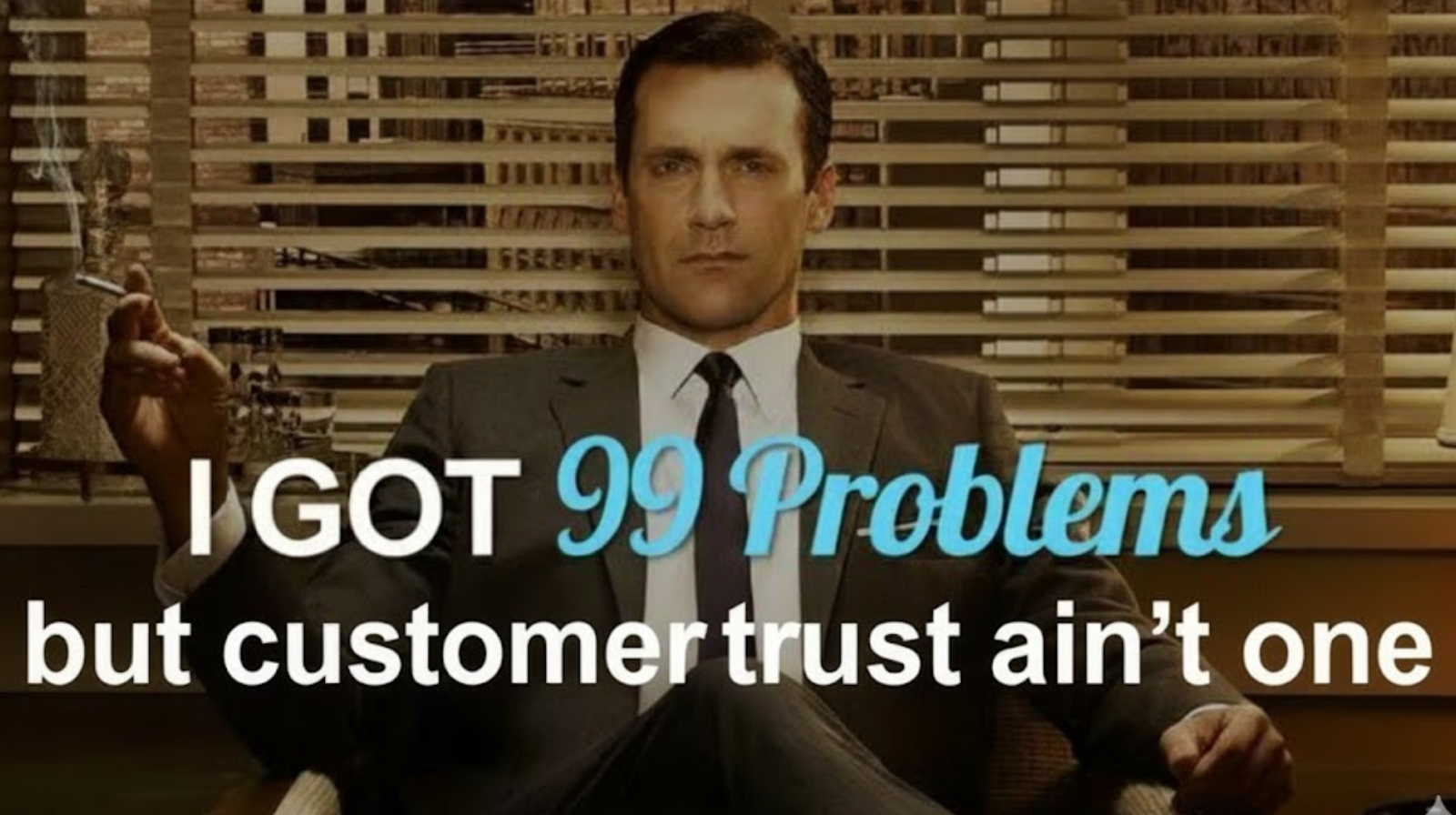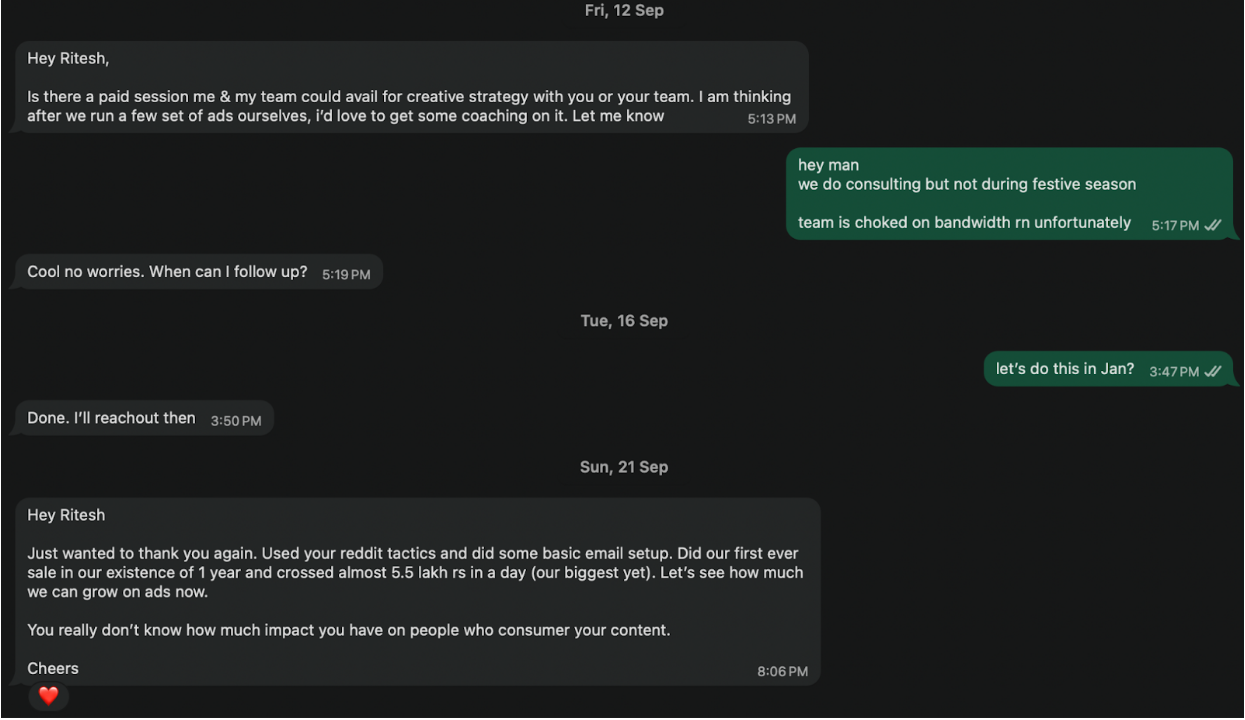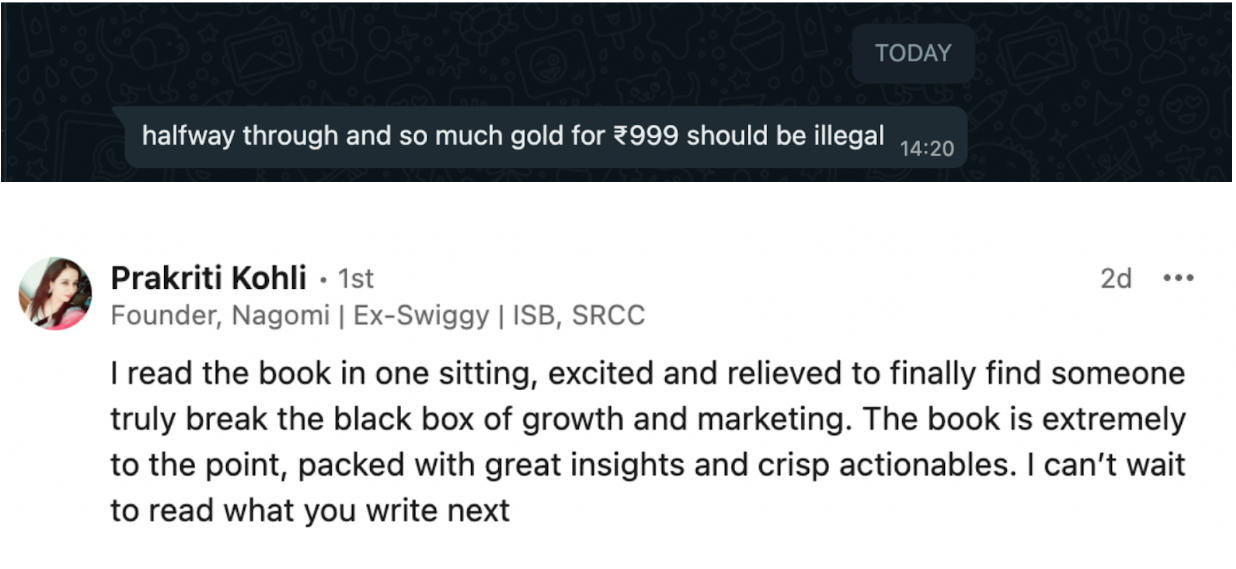
If you’re a D2C founder, this blog will show you:
This isn’t just theory….these are lessons shaped by working closely (and intentionally learning from) brands like Cinnamon Kitchen, Manzuri, Gully Labs, Justhuman, and The Plated Project, as well as my own founder journey.
October CPMs are brutal. Everyone is overspending and under-converting.
Experienced (bootstrapped) founders don’t play that game. They sharpen their sword now, so they can swing harder in January.
Here’s the math showing a new protein brand as an example of how to make PR work in your favour in the coming few months.
PR vs No PR 6-Month ROI (Protein Powder Brand)


In this model, I’ve intentionally assumed there is no direct short-term revenue benefit from PR in Oct–Dec, even though in reality PR almost always drives traffic spikes.
If you capture those email IDs with strong pop-ups, that traffic compounds for months after. For the protein powder category, I’ve modeled a January AOV spike -> a seasonal fact since 70% of all gym memberships are sold in January and demand naturally peaks.
After Jan, AOV drops back down, keeping the model conservative.
I’ve also modeled only a 10% uplift in conversion rates (instead of 20–30% that PR typically delivers) to show that even in the most modest scenario, PR ROI is clear.
Finally, CPCs improve in Q1 because PR-backed credibility increases ad CTRs. In short, even with conservative assumptions across every lever, PR still lifts ROI significantly. In reality, the upside will be much higher.
But here’s the most fun part about this process:
-> PR doesn’t vanish in March. It stacks into every campaign, every email, every touchpoint you run after. Which means the compounding ROI is much higher across the full year.
Most founders think PR is logos on a website or a humblebrag post on LinkedIn.
Wrong. PR is a financial lever. It directly changes your business math:
PR isn’t decoration or an ego boost. If done strategiucally & surgically right before your best months, it can increase your annual revenue by 15-25% with zero increase in your total spends.
Here’s the brutal truth: if you’re not PR-able, you’re building wrong.
If you’re another hoodie brand, no one cares.
But PR doesn’t only come from your product. It can also come from your founder story.
Maybe your journey is unique. Maybe your positioning is unconventional. Maybe your category hasn’t existed before.
You need at least one: brand positioning or founder positioning.
If you don’t have either, you won’t get PR.
And if you don’t get PR, you’ll always:
PR is the market’s test of whether your positioning is actually sharp enough.
Not all the time.
The rhythm that works:
(I talk a little bit more indepth about how to execute this better inhouse in the E-book i wrote earlier this year)
And “in-house” doesn’t have to mean YOU. Give it to an intern or Founder’s Office associate. Their KPI: maintain 20–50 journalist relationships.
Relationships compound. Today’s junior reporter is tomorrow’s senior editor. This is how PR becomes an asset, not a cost. For Manzuri and many of our clients, WE were the first stories of many young editors/ writers. Today these folks are senior and they reach out to us on their own whenever something new is coming up in our categories -> and in most cases, they don’t charge us any money.
PR isn’t just editorials anymore. It’s multi-channel credibility:
So when looking for a PR agency, don’t just think from the lens of traditional PR mediums such as editorials. Video first dsitruibution is the future of media and your PR strategy must focus on that just as much.
For Manzuri, we generated 800k+ website visitors from PR alone in our lifetime. But traditional media never got us any short term revenue uplifts beyond 1-2 days. All big short term revenue uplifts came from our reels going viral.


PR is NOT a top-of-funnel vanity badge. It compounds across layers:
PR → higher RPU (revenue per user)
Higher RPU → faster CAC payback.
Faster payback → faster reinvestment into growth.
That’s how PR ties directly into the Organic Growth Mastery flywheel.

Ever wondered why reviews are so important for your brand? (honestly - if you don’t have a way of getting 3-5% of your customers to leave a positive review, you are MISSING OUT)
Reviews are one layer of trust. PR is another.
Reviews are a signal that your customers love this. But PR is a signal that tells that the world also approves of you/ your brand.
Stack them, and suddenly you’re not “a brand.” You’re the brand.
This is how we’ve done it across Cinnamon Kitchen, Manzuri, Gully Labs, The Plated Project etc. and are currently doing it for some very early stage 0-1 brands such as Atovio.

PR only works if your positioning is sharp.
Getting rejected by PR agencies & editors will be your wakeup call.
If you’re not positioned so uniquely that editors are lining up to cover you, it will be tough to separate you from the sea of competiors.
Example:
-> Cinnamon Kitchen: “Vegan bakery” → “India’s first PCOS-friendly bakery.”
= Inelastic demand + PR pull.
Read the full case study on their positioning here to get a deeper sense of what i mean.
If you’re generic, you’re invisible.
If you’re different, you’re PR-able.
If you’re PR-able, you’re scalable.
PR isn’t vanity. It’s survival for modern-day consumer brands.
It increases RPU.
It lowers CAC.
It compounds across ads, email, retention, referrals.
And it’s the market’s test of whether your positioning is sharp enough to matter.
Here’s my last attempt to convince you to give my Organic Growth Mastery (OGM) doc a shot. -> I spent 3-4 hours to write this one blog article which hopefully provided you enough value & direction to start investing in PR right away in the 7-10 mins you spent reading this.-> The OGM that i have been talking about took me 200+ hours to write and I genuinely believe it will give you more value per minute than anything else you’ll read this month.-> I update the OGM every 1-2 months with whatever new thing i am learning while scaling our brands.-> Every person who purchases the OGM gets a 1-1 consultation call with me (i have stopped doing consultation calls with non-retainer clients in general, due to limited bandwidth)



This is my first book, and I’m still figuring it out. What matters most isn’t the money… it’s knowing that something I wrote is worth another founder’s time.
Every time someone backs this work, it pushes me to keep writing and sharing more. And the more I write, the more founders and small business owners get impacted.
If this resonates, I’d love for you to check out the full 100-page version of Organic Growth Mastery.the link to purchase is right at the bottom of the free trial guide.

Get your hands on the the stuff that actually compounds.
Positioning. Retention. Content. Community.

Welcome to Finsweet's accessible modal component for Webflow Libraries. This modal uses Webflow Interactions to open and close. It is accessible through custom attributes and custom JavaScript added in the embed block of the component. If you're interested in how this is built, check out the Attributes documentation page for this modal component.
See docs